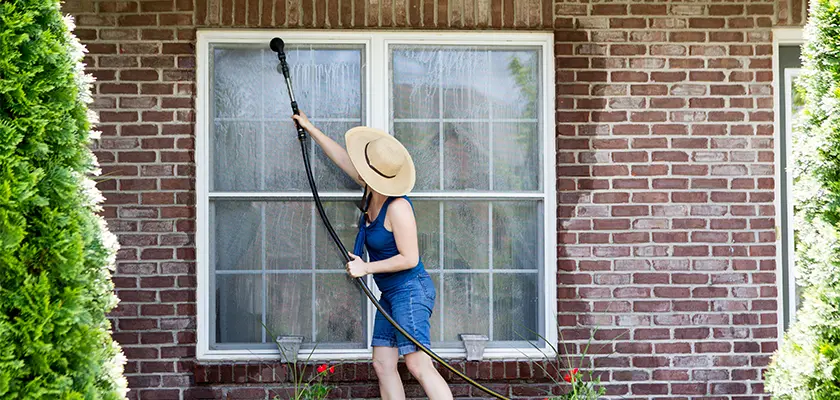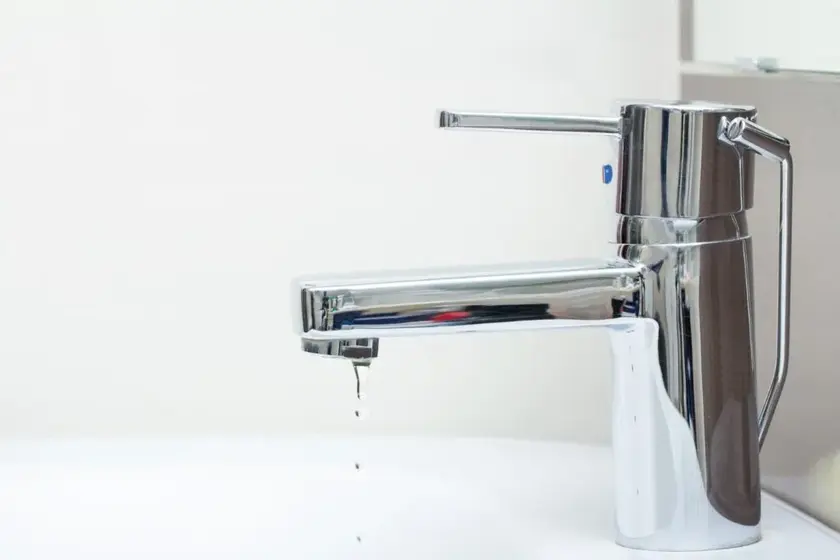
Spring is in the air! It’s time to put away the snow shovels and get out your gardening spade. But before you tend to your azaleas and bust out the feather duster for some annual spring cleaning, it’s important to check the maintenance items on this list. This will allow you to get in front of potential problems before they turn into a catastrophe.
From exterior wear and tear to the effect of environmental changes on your home systems, the winter season can be tough on your home. As a result, to ensure your home and its systems last as long as possible, it’s essential they’re checked and cared for accordingly. Neglecting to take these steps can lead to expensive, unwanted surprises when you least expect them.
Similar to spring cleaning, spring home maintenance checks can start as early as March 1st. Ideally, you should have completed these tasks before the end of April. As such, you’ll want to plan to complete the actions on this list annually.
Naturally, late is always better than never. If you find yourself in May and still haven’t started on your spring cleaning and home maintenance checks, make a point to get on it right away.
Everyone’s house is different, so not everyone will need to check or clean the same things. However, to make things easier for you, we’ve assembled a brief checklist of the tasks you’ll want to complete every spring.
Think of this as a starting point for your annual “to do” list when the weather gets warmer. Feel free to print it out or copy it into another document to add items of your own!
Be sure to pace yourself! If you find yourself with the energy to keep going, keep going. While it’s fine to take breaks, make sure not to skip a day. Set a plan and cleaning schedule. Involve the family as well, as that can help move things along much more quickly.
Foundation problems can be a serious pain – and an expensive one – so you’ll want to inspect your home for any large cracks or damage once the winter snow melts away. Be on the lookout for misaligned doors or windows, cracked drywall, water in your basement or crawlspace, and sloping floors or staircases.
If you see especially wide cracks – larger than a quarter inch – you may want to contact a professional to have the crack patched or repaired. Left untended, foundation and masonry problems can be the cause for serious financial headache.
Chances are you haven’t used your air conditioning system for a few months, particularly if you dwell in a colder climate. Spring is the opportune time to get it checked out and primed for the heat of summer. From replacing filters to checking hoses and connections for leaks, you’ll want to make sure everything is clean and functional before the season gets too hot.
While you’re at it, you can also dust the unit, clean the connections, and ensure all drain pans are clear of blockage and debris. If you’re not comfortable doing this, call in a professional. Likewise, if you find your air conditioner suddenly stopped working, you may be covered with your home warranty through Select. It’s a less expensive alternative to replacing your air conditioning system, that’s for sure.
Take the time to clean your home’s exterior, removing dead leaves and debris from your gutters and clearing your downspouts. Windows should be washed carefully using glass cleaner. You can also use a pressure washer to clean the siding of your home – just be careful not to use it on your windows, as you may damage your wire mesh screens.
While you’re out there, check for these signs that your gutters need replacing. Water and rainfall can do serious damage to your home if not redirected properly, and your gutter system is the first line of defense against that.
Between mosquitoes and termites, the warmer weather can be rough on both you and your home. Look for instances of still water – these are prime breeding grounds for mosquitos.
You’ll also want to inspect your house for any small holes that may be from termites. Spring is when termites tend to swarm. If you see signs of termites, get in touch with an exterminator right away.
If you live in a climate with a colder winter, chances are you haven’t touched your home sprinkler system in months. That’s why it’s important to check for leaks and other issues before you set it to run for the warmer months of the year. To make things easier, we’ve put together a six-step guide for inspecting your sprinkler system. Check it out!
Spring is the perfect time to clean and inspect all your home’s major appliances.
You’ll also want to clean and test your stove and oven. If you discover that your appliances aren’t working, reference your home warranty plan – you may be covered!
Beyond cleaning and checking your home systems, if you really want to go the extra mile, consider getting a home inspection. It can loop you into priorities and overlooked issues requiring your attention. This is a good practice, whether you’re looking to keep your home for the long term or plan to sell it in a few years.
Likewise, making sure you’re protected with a home warranty can cover you in case of the unexpected. Home warranties will cover the costs of a repair or replacement in the case of a home system or appliance breakdown. It’s transferrable at the time of sale, should your house ever go to market, and it’s a great way to ensure unfortunate surprises don’t break your momentum.
Don’t have a home warranty? Don’t wait until it’s too late! Check out our current plans and get your free quote. Call at 800-670-8931 today.

Don’t wait until it’s too late! Check out our current plans and get your free quote.

Household Tips
Without a doubt, toilets are among the most important elements of any home plumbing system. Of course, when there’s a problem with any toilet, this makes it all the more..

Household Tips
Dealing with a leaky faucet can be frustrating, wasteful, and costly. If you are wondering how to fix leaky faucet, then you've come to the right place. You would be..

Household Tips
One of the top challenges homeowners face when taking care of a house is simply organizing it. For many, appliance maintenance is hidden behind a mountain of other tasks. Start..